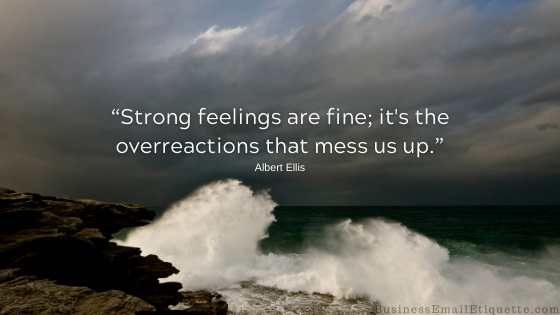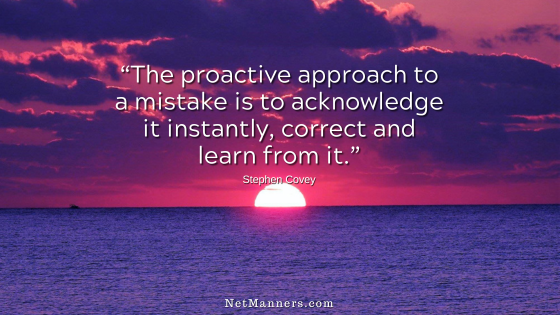Stop, Reread and Think Before You Click Send

My posts are often based on my own experiences running my business. Considering that I receive more emails than most folks daily, this post is about a trend I see forming that seems to be happening more often.
What is “it”? Recipients are not reading my emails in their entirety, and they respond, sometimes overreacting. Do you run into this, too?
Twice this week, I’ve had onliners reply to emails stating incorrect assumptions or information. This is compounded by the fact that they also did not take the time to read my previous correspondence. They scanned and replied.
You’ll see that I down-edit my replies when you email me. This makes it easy for the recipient to know exactly what I am responding to. Because I respond point by point, this approach ensures that there is no confusion and that I address all concerns.
In both cases this week, my emails were very clear—that is if they were read in full. The assumptions made were clearly due to the other side not taking the time to read the entire email, which was compounded in one case by not reading previous emails on the same topic.
They were more concerned about making their point. And what does that reflect? Was their point more important than the information I provided that discounted their “point?”
Clear Communications = Paying Attention to Details
Yes, I know. We are all in a hurry. Paying attention to detail takes time, and we do not have enough time in the day.
But when you don’t take the time to read the entire message before you reply, it appears that paying attention to detail is not a priority. And that’s not a good look when it comes to business communications of any kind.
Not taking the time to scroll a bit to see the responses to your issues or questions appears lazy. That could be embarrassing and the kiss of death to any business.
To add salt to the wound, because you assumed based on a quick overview instead of taking the context in its entirety, you became difficult to communicate with, which created a loss of efficiency.
And no, saying, “I may not have read your email thoroughly, but…” before you post your response doesn’t make your statements valid or accurate. You simply appear to have no desire to take the necessary time to clarify your business communications.
Certainly not a professional approach, right? What does it say about a person who whips off an email filled with assumptions contrary to the content of the email they are replying to? Or you ask questions whose answers were, in fact, in the email you are responding to?
Build Your Communication Skills
To learn to down-edit skillfully, you must read and reply to each point in your communications. This practice keeps both sides on the same page and can avoid dangerous assumptions and unnecessary misunderstandings.
It is your job to read communications completely before responding to them. Regarding your business email communications, you are responsible for answering questions accurately.
Before jumping to make assumptions or accusations, take a deep breath and step away before responding. Clear your head, then come back. You can then be sure that your response will be on point.
Finally, read your email out loud. Take the time to consider whether what you are typing is appropriate and accurate compared to what was typed by the other side. You might be surprised how stepping away and rereading an accusatory response before clicking send can help you avoid a negative impression.
If you are in a hurry and don’t have time to read the entire email before replying in haste, don’t reply until you have the time to send an educated response. You’ll save face and eat a lot less humble pie.







